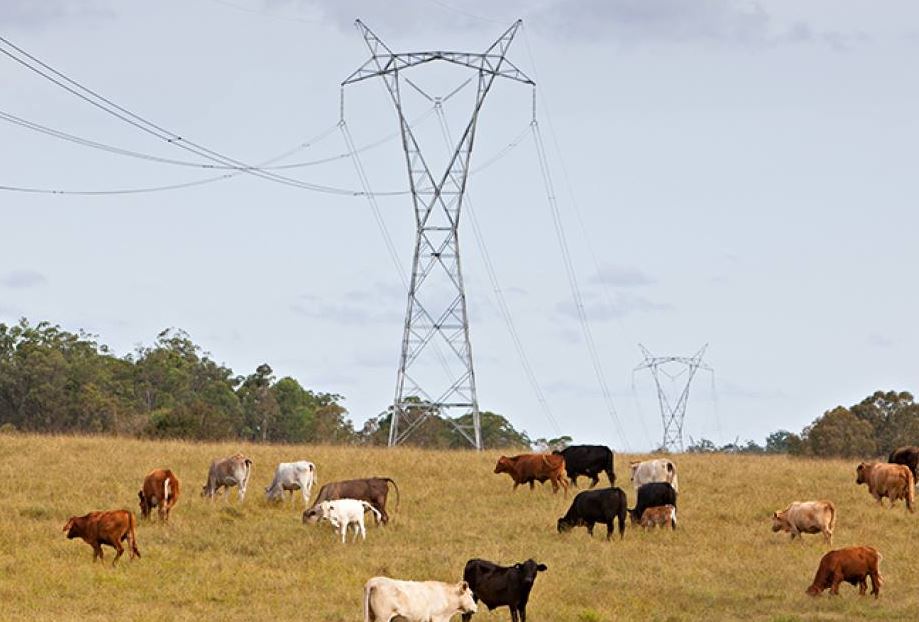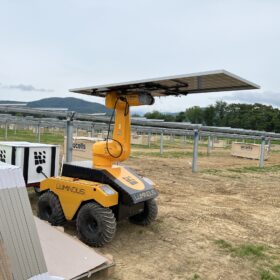The Queensland government-owned Powerlink has outlined a new payment framework that “significantly boosts” payments to an estimated $300,000 per kilometre for landholders hosting new transmission infrastructure on their properties and also provides financial packages to landholders with properties adjacent to newly constructed transmission lines.
Queensland landholders whose properties are traversed by a transmission easement are already entitled to payments but Powerlink said under the new SuperGrid Landholder Payment Framework, owners of properties neighbouring its new infrastructure will also receive payments.
Powerlink said the new framework will provide payments for owners of adjacent land within, or partially within, a one-kilometre radius of a new transmission line. The payment will be calculated on the amount of land located within this zone.
“We are the first transmission entity in Australia to offer a payment of this type,” the network operator said.
Powerlink said the revised framework also significantly boosts payments to landholders hosting new transmission infrastructure with the increase in payments based on property-specific values and impacts, as opposed to using only a flat rate. It will also improve flexibility around the timing of payments, offering an annual payment option, and giving payment estimates to landholders much earlier in the process.
Powerlink Chief Executive Paul Simshauser said the new payment framework was settled on after a review sparked by rising community expectations and the release of the Queensland government’s $62 billion Energy and Jobs Plan.
The state is aiming to supply 70% of its energy demand from renewables by 2032, and 80% by 2035. It plans to reach these targets by constructing what it’s calling the ‘Queensland SuperGrid’ – a massive fit out of solar, wind, battery and hydrogen generators connected through publicly-owned transmission assets.
“Increasing landholder and community expectations, together with the release of the Queensland Energy and Jobs Plan, had prompted a review of Powerlink’s approach,” Simshauser said, adding the new framework will see landholders receive a fair payment to recognise the important role they have in allowing the network operator to deliver critical infrastructure.
“Providing landholders with greater flexibility around the timing of payments, with both up-front and annual payment options now available, was important – along with ensuring the new framework considered the variance in property values across different regions, rather than applying a blanket approach,” he said.
Simshauser said the new framework was guided by a reference group of stakeholders including representatives from local councils, the Queensland Farmers’ Federation (QFF), large energy user advocates and consumer groups.
QFF Chief Executive Officer Jo Sheppard said the new payment framework will ensure landholders receive payments that are more reflective of the use of their land.
“It is important that a process is in place to represent the interests of those who will be directly impacted by transmission lines and that the needs of landholders and the broader agriculture sector are considered as the complexities of integrating grid infrastructure are navigated,” she said.
Powerlink said the new payment framework will apply to all current and future transmission connection greenfield projects where landholder payment negotiations have not commenced.
This content is protected by copyright and may not be reused. If you want to cooperate with us and would like to reuse some of our content, please contact: editors@pv-magazine.com.









2 comments
By submitting this form you agree to pv magazine using your data for the purposes of publishing your comment.
Your personal data will only be disclosed or otherwise transmitted to third parties for the purposes of spam filtering or if this is necessary for technical maintenance of the website. Any other transfer to third parties will not take place unless this is justified on the basis of applicable data protection regulations or if pv magazine is legally obliged to do so.
You may revoke this consent at any time with effect for the future, in which case your personal data will be deleted immediately. Otherwise, your data will be deleted if pv magazine has processed your request or the purpose of data storage is fulfilled.
Further information on data privacy can be found in our Data Protection Policy.